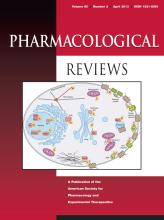Abstract
Since the discovery nearly 60 years ago, cAMP is envisioned as one of the most universal and versatile second messengers. The tremendous feature of cAMP to tightly control highly diverse physiologic processes, including calcium homeostasis, metabolism, secretion, muscle contraction, cell fate, and gene transcription, is reflected by the award of five Nobel prizes. The discovery of Epac (exchange protein directly activated by cAMP) has ignited a new surge of cAMP-related research and has depicted novel cAMP properties independent of protein kinase A and cyclic nucleotide-gated channels. The multidomain architecture of Epac determines its activity state and allows cell-type specific protein-protein and protein-lipid interactions that control fine-tuning of pivotal biologic responses through the “old” second messenger cAMP. Compartmentalization of cAMP in space and time, maintained by A-kinase anchoring proteins, phosphodiesterases, and β-arrestins, contributes to the Epac signalosome of small GTPases, phospholipases, mitogen- and lipid-activated kinases, and transcription factors. These novel cAMP sensors seem to implement certain unexpected signaling properties of cAMP and thereby to permit delicate adaptations of biologic responses. Agonists and antagonists selective for Epac are developed and will support further studies on the biologic net outcome of the activation of Epac. This will increase our current knowledge on the pathophysiology of devastating diseases, such as diabetes, cognitive impairment, renal and heart failure, (pulmonary) hypertension, asthma, and chronic obstructive pulmonary disease. Further insights into the cAMP dynamics executed by the Epac signalosome will help to optimize the pharmacological treatment of these diseases.
Footnotes
This work was supported by grants from the Nederlands Astma Fonds (NAF 3.2.09.034, NAF 3.2.11.015); and a Rosalind Franklin Fellowship from the University of Groningen to M.S.; and a grant from the NWO VIDI program (016.122.302) to F.J.D.; H.M. is supported by Merck Sharp & Dohme (Oss, The Netherlands).
- Copyright © 2013 by The American Society for Pharmacology and Experimental Therapeutics
PharmRev articles become freely available 12 months after publication, and remain freely available for 5 years.Non-open access articles that fall outside this five year window are available only to institutional subscribers and current ASPET members, or through the article purchase feature at the bottom of the page.
|






